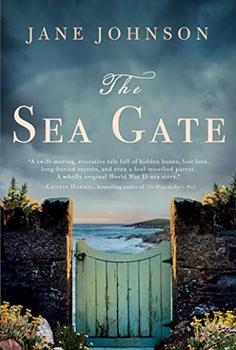Summary | Excerpt | Reading Guide | Reviews | Beyond the book | Read-Alikes | Genres & Themes | Author Bio

A love letter to reading, a book for the feral reader in all of us, a return to that rich vein of storytelling that our parents loved and that we loved as children. Diane Setterfield will keep you guessing, make you wonder, move you to tears and laughter and, in the end, deposit you breathless yet satisfied back upon the shore of your everyday life.
All children mythologize their birth...So
begins the prologue of reclusive author Vida Winter's
collection of stories, which are as famous for the
mystery of the missing thirteenth tale as they are for
the delight and enchantment of the twelve that do exist.
The enigmatic Winter has spent six decades creating
various outlandish life histories for herself -- all of
them inventions that have brought her fame and fortune
but have kept her violent and tragic past a secret. Now
old and ailing, she at last wants to tell the truth
about her extraordinary life. She summons biographer
Margaret Lea, a young woman for whom the secret of her
own birth, hidden by those who loved her most, remains
an ever-present pain. Struck by a curious parallel
between Miss Winter's story and her own, Margaret takes
on the commission.
As Vida disinters the life she meant to bury for
good, Margaret is mesmerized. It is a tale of gothic
strangeness featuring the Angelfield family, including
the beautiful and willful Isabelle, the feral twins
Adeline and Emmeline, a ghost, a governess, a topiary
garden and a devastating fire.
Margaret succumbs to the power of Vida's storytelling
but remains suspicious of the author's sincerity. She
demands the truth from Vida, and together they confront
the ghosts that have haunted them while becoming,
finally, transformed by the truth themselves.
The Thirteenth Tale is a love letter to
reading, a book for the feral reader in all of us, a
return to that rich vein of storytelling that our
parents loved and that we loved as children. Diane
Setterfield will keep you guessing, make you wonder,
move you to tears and laughter and, in the end, deposit
you breathless yet satisfied back upon the shore of your
everyday life.
Setterfield's erudite first work of fiction has all the hallmarks of a classic gothic novel, including the creepy ruined house, long-kept secrets, a madwoman in the attic and a dabbling of ghosts, Set in present-day England it has drawn comparisons to novels by the likes of Daphne du Maurier, Wilkie Collins and Charlotte Bronte...continued
Full Review
(1226 words)
This review is available to non-members for a limited time. For full access,
become a member today.
(Reviewed by BookBrowse Review Team).
Definitions of a gothic novel abound but most sources agree that it is one in which supernatural horrors and an atmosphere of terror are pervasive, and where the action usually takes place in a dark, mysterious building, typically a castle built in the Gothic architectural style*.
Horace Walpole's The Castle of Otranto (1764) is considered the first gothic novel, but it was Ann Radcliffe who popularized the form with novels such asThe Mysteries of Udolpho. During the 19th century there was a Gothic revival in the world of architecture; and the world of literature saw a, perhaps, connected resurgence of Gothic literature, ranging from the "penny dreadfuls" to the works of Edgar Allan Poe and Bram Stoker, with a Gothic influence being seen in ...
This "beyond the book" feature is available to non-members for a limited time. Join today for full access.

If you liked The Thirteenth Tale, try these:

by Kate Fagan
Published 2025
The Seven Husbands of Evelyn Hugo meets First Lie Wins in this electric, voice-driven debut novel about an elusive bestselling author who decides to finally confess her true identity after years of hiding from her past.

by Jane Johnson
Published 2021
A broken family, a house of secrets - an entrancing tale of love and courage set during the Second World War.
Children are not the people of tomorrow, but people today.
Click Here to find out who said this, as well as discovering other famous literary quotes!